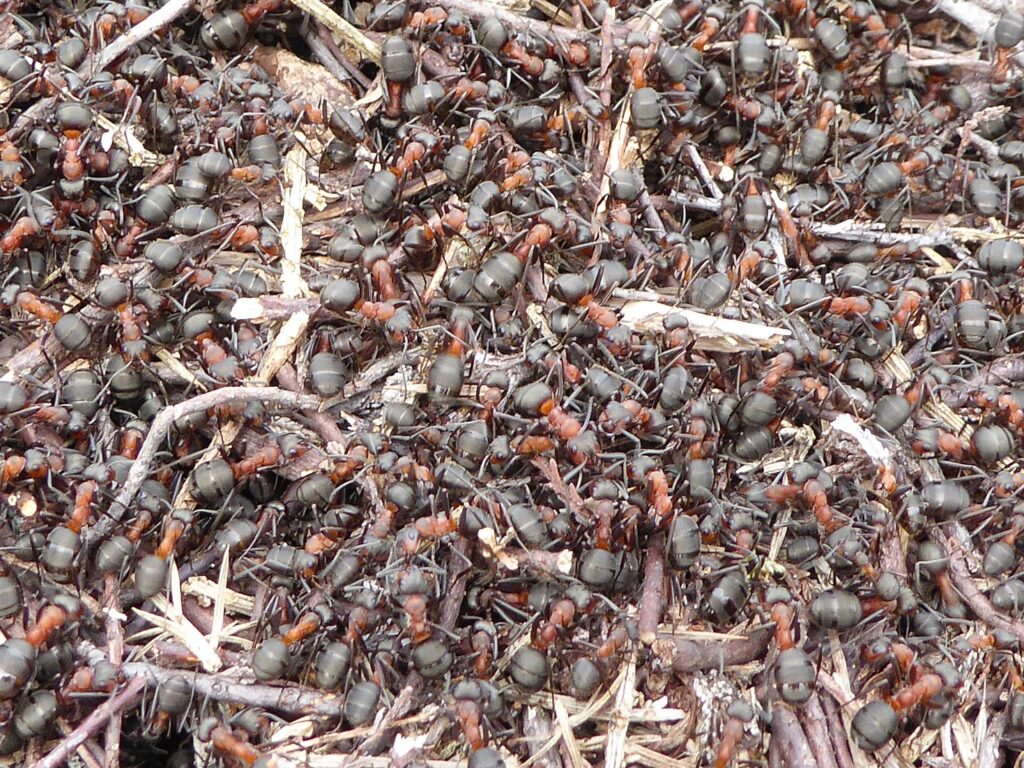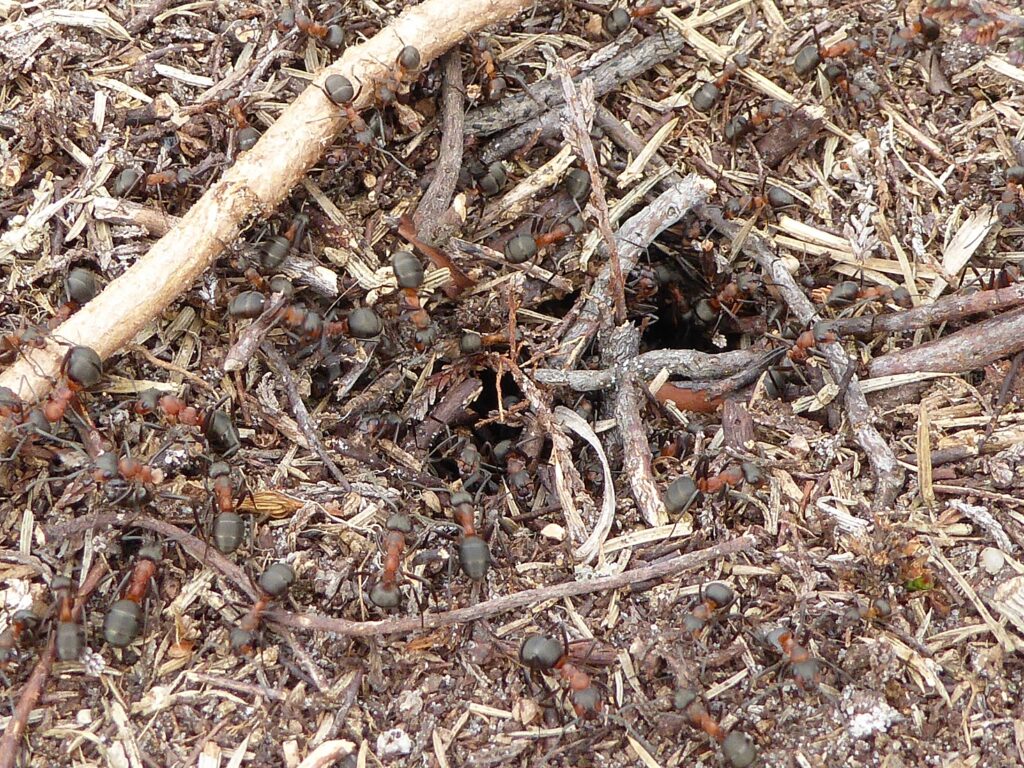
Ants are fascinating. As individuals they are small and easily overlooked, however they are highly sociable insects that live in large, complex communities working together to build and protect a home, gather food and help care for the next generation.
As a shared community with their own particular roles, they are a successful example of how a community of both place and practice, living sustainably with environment and nature, can look like. As the weather gets warmer, ants become more active so it’s a great time for ‘ant watching’ and learning how they adapt to their surroundings.
There are 50 types of ant in the UK and more than half can be found in the New Forest.
My favourite ant to look for is the common Southern Black Wood Ant (Formica rufa). It’s a big ant with an orange and black body, dark head and large jaws (mandibles); also known as the Red Wood Ant or Horse Ant. Look for their nests in conifer woodland alongside open south-facing tracks. Ants are construction specialists and their huge ant hills can stand over 1 metre tall. Colonies can last several years and within an ant nest there can live between 100,000 to half a million individuals!
Look closer, and you’ll see that the surface of the nest is ‘thatched’ with conifer needles, small twigs and dried grass. These are carefully positioned at right angles to capture the suns rays, acting like solar panels to warm the nest above that of its surroundings. The thatch is also precisely placed so that rain trickles off and away from the nest, keeping it dry.
Tunnel entrances further help to regulate temperature which enables the nest to ‘breathe’ to maintain its temperature – a great example of ‘passivhaus’ building design. Energy efficiency and low environmental impact in practice! We can learn a lot from nature.

On a warm day you’ll see the whole surface moving with ants. These ants will be warming themselves before going off foraging or sometimes bringing their eggs to the surface for an extra boost of warmth. Temperature is critical to brood development, so eggs and larvae are moved around within the nest’s underground chambers and tunnels, for optimised growth development.
However, don’t get too close – they are aggressive predators and can spray formic acid (which smells like vinegar) from their abdomens when they feel threatened. They use this to kill prey along with their large, strong jaws. Each colony has its own hunting territory. Look for foraging trails that radiate out from the nest.
An individual ant is strong and can amazingly lift and carry an object 25 times its own body weight. See if you can spot some ants working together to help carry larger insect prey such as a caterpillar or beetle larvae back to the nest: cooperation and teamwork in action.
Wood ants also feed on honeydew which is secreted by aphids that feed on plant sap. The aphids squirt out large amounts of excess sugars; ants love the sweet sticky dew. By stroking or ‘milking’ the aphids, ants can encourage them to secrete the honeydew on demand. In return, the ants protect the aphids from predators, removing caterpillars and control other tree pests; a mutually beneficial relationship. Impressive when you consider that a healthy colony can need 100,000 insects each day for food, so it’s not surprising they are called the ‘forester’s friend’. Can you spot a column of foraging ants moving up the trunk of a tree?
I think that ants give us an important message – ‘together great things can be achieved’. Reminding us that we are part of a natural community (nature) and although we have freedom of choice this comes with responsibility.
Ant cities live in harmony with their surroundings, providing a useful role within the larger ecosystem whilst surviving and thriving. What would our cities and communities be like if we lived a little more as the ants do, I wonder?
Note: If you are unable to visit a woodland, then the smaller Black Garden Ant can be found easily nesting under logs, stones and compost bins in most gardens and school grounds – they are fascinating to observe too.
